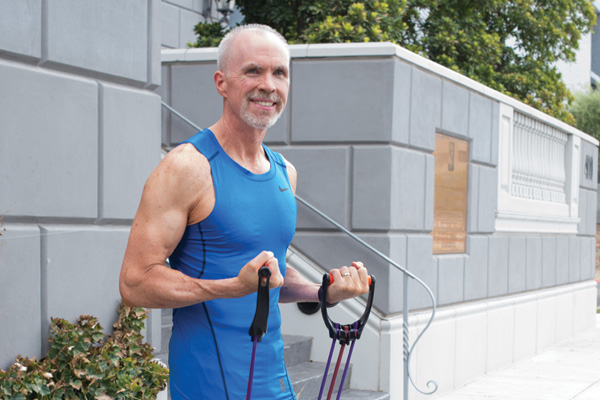New research from Loughborough University in England suggests that workouts using explosive muscle contractions may be a more effective way to increase muscle strength than traditional weight training.
Explosive weight training is different from traditional methods of weight training that emphasize slow and controlled movements with sustained muscle contraction. The researchers compared a workout involving short, explosive muscle contractions lasting less than one second to training with longer, sustained muscle contractions lasting three seconds (1).
The results of this study suggest that weight training with explosive muscle contractions is not only an effective way to increase strength and functional capacity, but can also be an easier and less tiring method of weight training. These benefits make explosive muscle contractions a highly efficient method of training.
Compared to explosive training, the traditional method of strength training with sustained muscle contraction is a more effective way to increase muscle mass, but requires a lot more effort. While increasing muscle mass may be the main goal of training for some people, many others are simply looking to maximize the strength and fitness benefits of weight training in the most efficient and effective way.
The researchers investigated the effects of explosive and sustained muscle contraction using a training program targeted to the quadricep muscles on the front of the thigh. The participants followed a training program involving 40 repetitions of either explosive or sustained muscle contraction three times a week for three months (1). The explosive group exercised their muscle as fast and hard as possible for one second while the sustained group gradually increased to 75 percent of their maximum force before holding for three seconds (1).
There are two components to the measurement of strength. Maximal strength is the greatest amount of force that your muscles can produce, while explosive strength is a measure of how fast you can apply muscular force. Muscle weakness includes having both a low maximal and explosive strength and is a concern for many groups of people. Improving both types of strength can enhance functional fitness and quality of life for anyone, including older adults and those with health concerns (2-4).
Explosive strength training that focuses on muscle contractions using rapid movement and short duration is relatively non-fatiguing and has been noted to be well tolerated by most groups, such as those with osteoarthritis (4).
This type of training has also been found to produce significant increases in both maximum and explosive strength (5). In contrast, traditional strength training typically focuses on training with longer muscle contractions with heavy weights leading to high levels of fatigue (6).
In conclusion the new study showed that short, sharp contractions are relatively easy to perform and a beneficial way of building up strength. These short, explosive contractions may also be beneficial to older individuals and patient groups such as those with osteoarthritis, who would benefit from getting stronger, but are reluctant to undergo tiring sustained contractions.
It needs to be noted that anyone who attempts this should have a firm understanding of all resistance exercises used and plenty of experience working out with weights. It is also advisable that resistance exercises are initially performed on machines to avoid issues with balance and to help prevent injury.
While hard training athletes or those looking to build the maximal amount of muscle may still have to employ traditional weight lifting, groups like seniors can overcome the barrier of painful long contractions that may have prevented them from reaping the benefits of resistance training in the past.
References
- Balshaw TG, Massey GJ, Maden-Wilkinson TM, Tillin NA & Folland JP. Training-specific functional, neural, and hypertrophic adaptations to explosive- vs. sustained-contraction strength training. J Appl Physiol. 2016 Jun 1; 120(11):1364-73.
- American College of Sports Medicine. American College of Sports Medicine position stand: progression models in resistance training for healthy adults. Med Sci Sports Exerc. 2009; 41: 687–708.
- Liu CJ & Latham NK. Progressive resistance strength training for improving physical function in older adults. Cochrane Database Syst Rev. 2009 Jul 8 ;(3):CD002759 .
- Penninx BW, Messier SP, Rejeski WJ, Williamson JD, DiBari M, Cavazzini C, Applegate WB & Pahor M. Physical exercise and the prevention of disability in activities of daily living in older persons with osteoarthritis. Arch Intern Med. 2001 Oct 22; 161(19):2309-16.
- Tillin NA, Pain MT & Folland JP. Short-term training for explosive strength causes neural and mechanical adaptations. Exp Physiol. 2012 May; 97(5):630-41.
- Linnamo V1, Häkkinen K & Komi PV. Neuromuscular fatigue and recovery in maximal compared to explosive strength loading. Eur J Appl Physiol Occup Physiol. 1998; 77(1-2):176-81.





